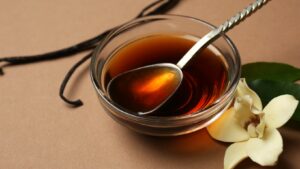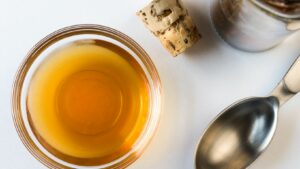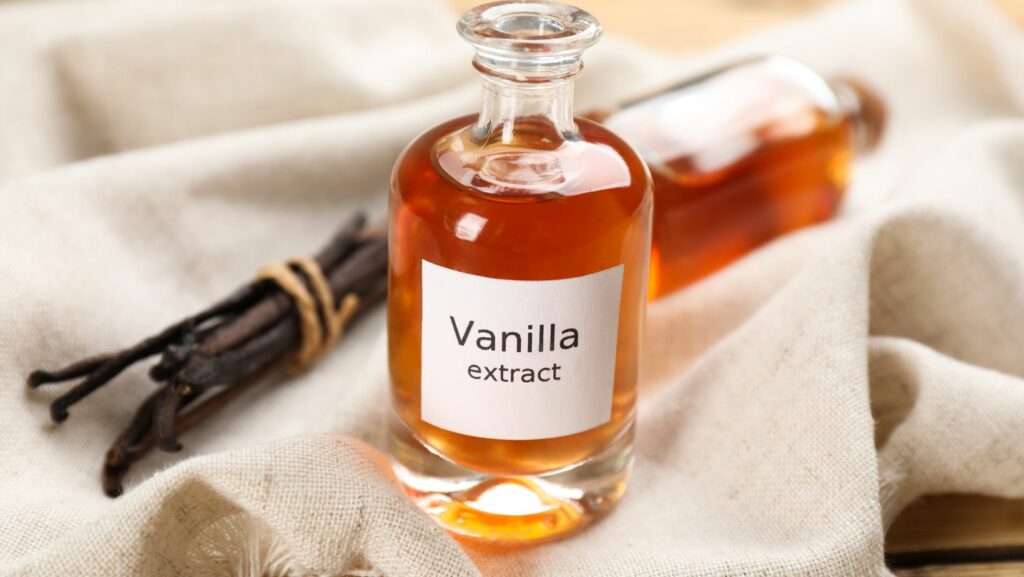Ever wondered about the secret behind the rich, sweet flavor in your favorite cakes and cookies? It’s likely the humble vanilla extract. But beyond its culinary capabilities, the vanilla extract nutrition label tells a fascinating story. This article will delve into the nutritional aspects of this aromatic ingredient, shedding light on its health implications.
Understanding a vanilla extract nutrition label can be like deciphering a complex code. It’s packed with information about calories, fats, sugars, and more. But what does it all mean when it comes to vanilla extract? What’s hidden behind those percentages and grams? Let’s unravel this mystery together, exploring the vanilla extract nutrition Label
Vanilla Extract Nutrition Label
 A comprehension of the vanilla extract nutrition label provides significant insights into its health benefits and it’s inherent properties. In a broader context, it aids in promoting healthier dietary choices by fostering an understanding of food components.
A comprehension of the vanilla extract nutrition label provides significant insights into its health benefits and it’s inherent properties. In a broader context, it aids in promoting healthier dietary choices by fostering an understanding of food components.
A vanilla extract nutrition Label communicates imperative information such as calorie count, macro and micronutrients proportions, sugar content, and serving size. For instance, a common bottle of pure vanilla extract exhibits the following figures: zero grams fat, 1.6 grams carbs, 37 calories, and a negligible amount of protein. Observing these values, a chef or home cook gains valuable insights about how vanilla extract affects their meal’s nutrition profile.
Unpacking the Ingredient List
An ingredient list, thereupon, reveals the essential components of vanilla extract nutrition Label. Primarily, it’s composed of water, alcohol, sugar, and vanilla bean extractives. Additionally, the list sheds light on the absence or presence of potential allergens and artificial additives. For example, premium vanilla extract often contains no artificial flavors or colors, enhancing its appeal for health-conscious consumers. Thereby, the ingredient list acts as a guide for recognizing purer forms of vanilla extract nutrition Label and avoiding artificial or processed iterations.
The Nutritional Breakdown of Vanilla Extract
Calories and Macronutrients
Vanilla extract, despite its sweet taste, contains minimal calories and is virtually fat-free. For example, one tablespoon of pure vanilla extract has roughly 37 calories. As a low caloric food item, it’s a great addition to dishes that require sweet tones without significantly increasing the calorie content.
As for macronutrients, the same serving of vanilla extract encompasses little to no carbohydrates. It contributes pointers of protein, though it’s not a substantial source. Moreover, it doesn’t contain dietary fiber. A review of its nutritional breakdown thus reveals its caloric and macronutrient content to be of limited significance.
Vitamins and Minerals Content
 In terms of vitamins and minerals, vanilla extract nutrition Label isn’t a potent source either. The nutrient label shows trace amounts of certain minerals like potassium, zinc, and magnesium. An occasional rare find might be slight inclusions of vitamins like choline. However, these quantities are marginal and don’t considerably contribute to daily recommended intake values. Therefore, it’s typically not considered essential for meeting dietary nutrient goals.
In terms of vitamins and minerals, vanilla extract nutrition Label isn’t a potent source either. The nutrient label shows trace amounts of certain minerals like potassium, zinc, and magnesium. An occasional rare find might be slight inclusions of vitamins like choline. However, these quantities are marginal and don’t considerably contribute to daily recommended intake values. Therefore, it’s typically not considered essential for meeting dietary nutrient goals.
While it might seem that the nutritional value of vanilla extract is negligible, remember that it’s commonly utilized not for its nutrient contributions, but for the aromatic flavor it imparts to foods. The noteworthy aspect to consider is the purity of vanilla extract nutrition Label, ensuring there are no unwanted artificial additives. Likewise, keeping a check on serving sizes and sugar content helps make better and more informed dietary decisions.
Need To Know
Vanilla extract nutrition label reveals it’s more than just a flavor enhancer. It’s low in calories and fat, making it a guilt-free addition to your favorite recipes. While it doesn’t pack a punch in terms of macronutrients, it does offer trace amounts of minerals and vitamins. The key is to understand its nutritional content, serving sizes, and sugar levels. This knowledge empowers you to make healthier dietary choices. Remember to check the ingredient list and opt for pure forms without artificial additives. So, the next time you reach for that bottle of vanilla extract, you’ll know you’re making a well-informed decision. It’s a small but significant step towards a healthier lifestyle.

